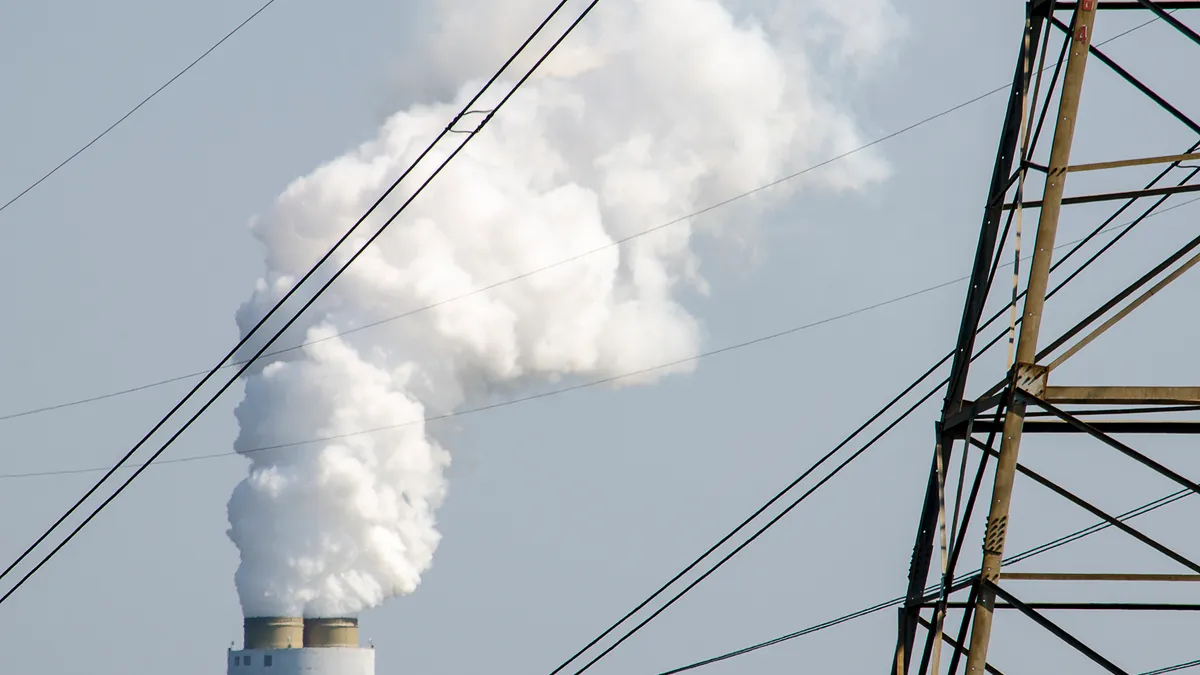Dive Brief:
- The merchant generation industry is seriously compromised, says a new report from Wilkinson Barker Knauer LLP and the Power Research Group, and some large generators could be "headed toward a second round of bankruptcies in less than twenty years."
- Stagnant demand growth, increasing renewable generation and historically low gas prices have sent the merchant sector into "crisis,” the law firm's study finds. And the losers will not just be power plant owners: WBK concluded customers could see higher and more volatile prices, decreased reliability, or both.
- The two reports out this week are similar to a study the U.S. Department of Energy is developing, addressing whether clean energy policies are forcing coal and nuclear plants offline and threatening power reliability. That report, slated to come out next week has now been pushed back to July or later, Axios reports.
Dive Insight:
The WBK study comes just days before the original release date for the DOE study, but the timeline for that highly-anticipated piece of analysis is now murky. Secretary of Energy Rick Perry said earlier this week that the review would be complete by the end of this month, but the deadline has been extended in July, a DOE spokesperson told Axios.
The DOE review is widely expected to conclude coal, nuclear and gas-fired plants are necessary to maintaining grid reliability, given President Trump's goals of boosting the fossil fuels sector and comments made by Perry in the press.
That would be a conclusion similar to WBK's findings, but the law firm does not ascribe blame to any one class of resource. Instead, they argue combination of low demand, increased renewables and historically low gas prices are combining to push merchant plants offline, similar to the conclusions of an earlier study from Columbia University, which pegged coal's decline largely to natural gas prices.
The key problem with the merchant business model is generators’ revenues generally do not cover the all-in cost of supply, said WBK, including both capital costs and variable costs of operation. And flat demand, amid a capacity boom, is a recipe for bankruptcies.
The study predicts that from 2017 through 2019, the increase in low cost generation from renewables and combined gas cycle turbines is expected to outpace demand growth.
“As a result, we expect the highest variable cost generators (the marginal, price setting units) in each of the five RTOs to experience significant declines in power output and capacity factors through 2019,” the study found.
“The losers in this scenario are not just the merchant plants with suffering bottom lines,” the study finds. “Customers lose in the form of higher and more volatile prices, decreased reliability, or both, and policy makers and regulators lose because they are left with the mess and no clear remedy."
Earlier this week, a report funded by the Advanced Energy Economy Institute and the American Wind Energy Association concluded the United States' power mix is changing—due to trio of factors similar to what WBK identified.
The report, conducted by Analysis Group, concluded cheaper natural gas, flat demand and more efficient generation were forcing some older units offline. But the report said that at least in the short term, the changes are not a threat to power reliability.
"Increasing quantities of natural gas and renewable generation are increasing the diversity of the power system and supporting continued reliable operations," the Analysis Group report concluded.














